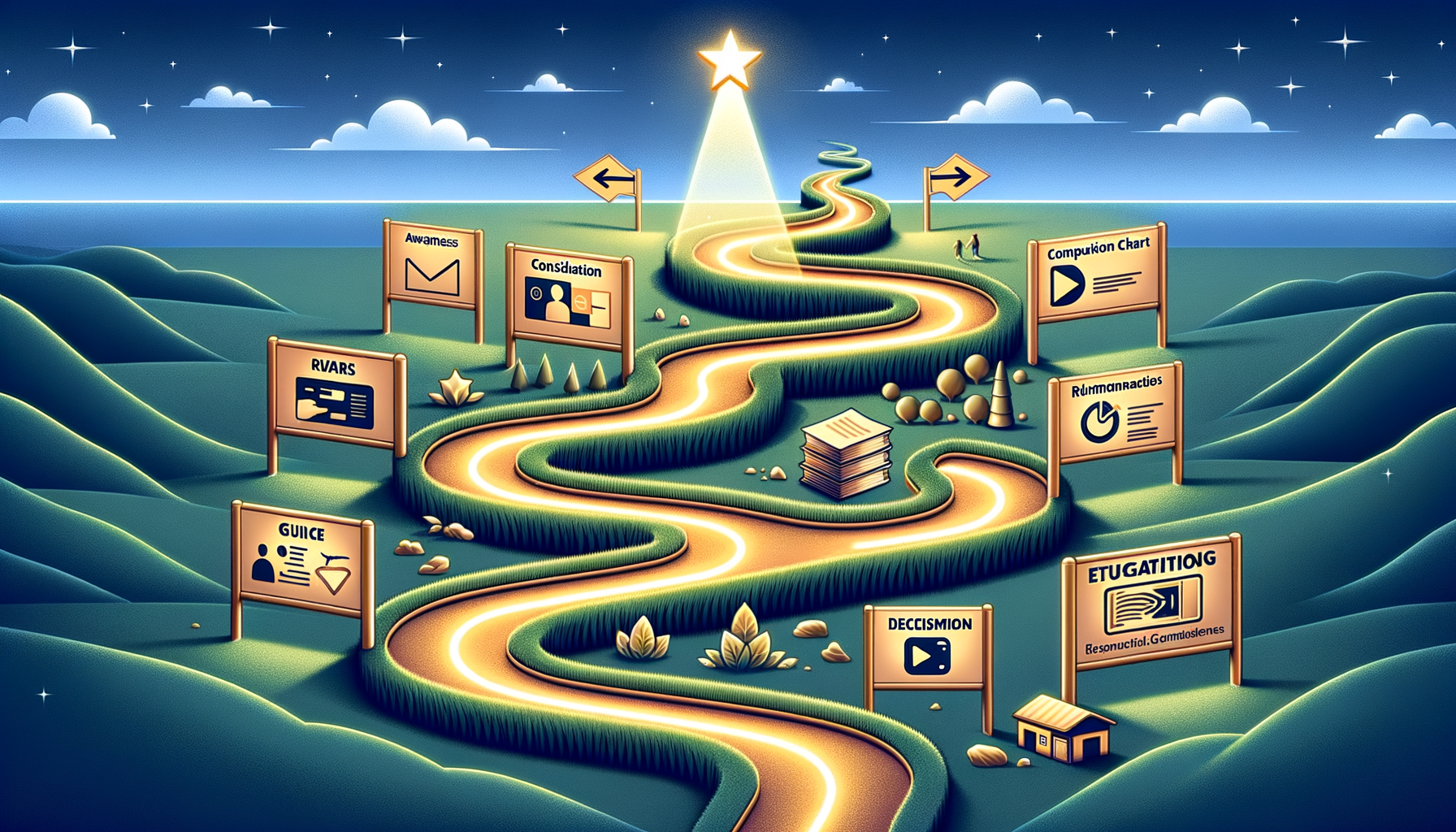“Unlocking Success in Content Marketing through Understanding the Buyer’s Journey”

Understanding the consumer’s journey is a critical element of successful content marketing strategies. The process that a customer takes to go from recognizing a need to making a purchase and beyond is often referred to as the buyer’s journey. By fully understanding this process, businesses can create targeted content that speaks directly to customers at each stage of their journey, building a relationship and guiding them towards making a purchase.
To understand the importance of the buyer’s journey in content marketing, it’s first important to understand what the buyer’s journey is. For the majority of purchases, especially those that are significant in value or importance, the buyer’s journey consists of three main stages: awareness, consideration, and decision.
In the awareness stage, a consumer has realized that they have a need or a problem that requires a solution. They will be looking for information to better understand, frame, and give a name to their problem.
In the consideration stage, buyers have clearly defined their problem or need and are now committed to researching and understanding the different approaches or methods available to solve their problem or meet their need.
Finally, in the decision stage, the consumer has already decided on a solution. They now are comparing different vendors or products to make a final decision on what to purchase to solve their problem or meet their need.
Understanding these stages is crucial to delivering the right content at the right time, therefore businesses need to develop a content strategy that aligns with the buyer’s journey. This way, businesses can ensure that they are providing informative, engaging content that addresses the buyer’s needs at each specific stage of their journey.
The question then, is how does a business develop content to meet the buyer’s needs at each stage of the journey?
In the awareness stage, the goal should be to educate the consumer about their problem or need. They may not even fully understand what their problem is at this stage, so content should be designed to help them identify what they’re dealing with and provide clear, educational information about it. This can be done through blog posts, infographics, videos, or social media content. Keyword research will play an integral part in this stage, as you have to anticipate what words or phrases these potential customers may use in their search for answers.
During the consideration stage, consumers are interested in exploring all the potential solutions to their problem. In this stage, your content needs to position your product or service as a viable solution. Types of content that work well in this stage are case studies, how-to guides, whitepapers, and comparison charts. Webinars or content that requires the visitor to provide their information can be beneficial in this stage as it enables businesses to collect potential leads.
In the final stage, decision, consumers have explored all their options and are on the verge of making a purchase. Your content’s mission is to reassure them that your product or service is the best choice. Reviews, testimonials, product demos, or detailed product specification lists will give the consumer the remaining information needed to make a final purchase decision.
It’s important to keep in mind though that the buyer’s journey is not as straightforward as it seems. Consumers might move back and forth between the stages, depending on a variety of factors, including budget constraints, time, or other needs. This fluidity accentuates the importance of having a diverse content mix that caters to all stages of the journey.
Moreover, developing a buyer persona – a semi-fictional representation of your ideal customer based on market research and insightful data about your existing customers – can be valuable when creating content for each stage.
A successful content marketing strategy doesn’t just create content; it creates the right content and delivers it when the consumer needs it most. Understanding the buyer’s journey is crucial to this, allowing businesses to guide consumers toward the conclusion that their product or service is the best fit for their needs.
Finally, the best practice for businesses is to measure the impact of their content regularly and adjust it based on their findings. Tools such as Google Analytics can give you insights into what content is driving the most traffic, what is keeping visitors on your site, and what is leading to conversions. Metrics like these will help refine your content marketing strategy and ensure you’re effectively reaching your target audience, no matter what stage of the buyer’s journey they’re in.
In conclusion, the buyer’s journey is an integral element of a content marketing strategy. The ultimate goal of understanding and leveraging the buyer’s journey is to provide potential customers with the right information at the right time. This not only establishes your business as a trusted information source but also guides consumers down the path towards purchasing your product or service. With a keen understanding of the buyer’s journey, a well-segmented content strategy, a firm grasp of your buyer persona, and regular metrics monitoring, you can make the most of your content marketing efforts.

Recent Comments